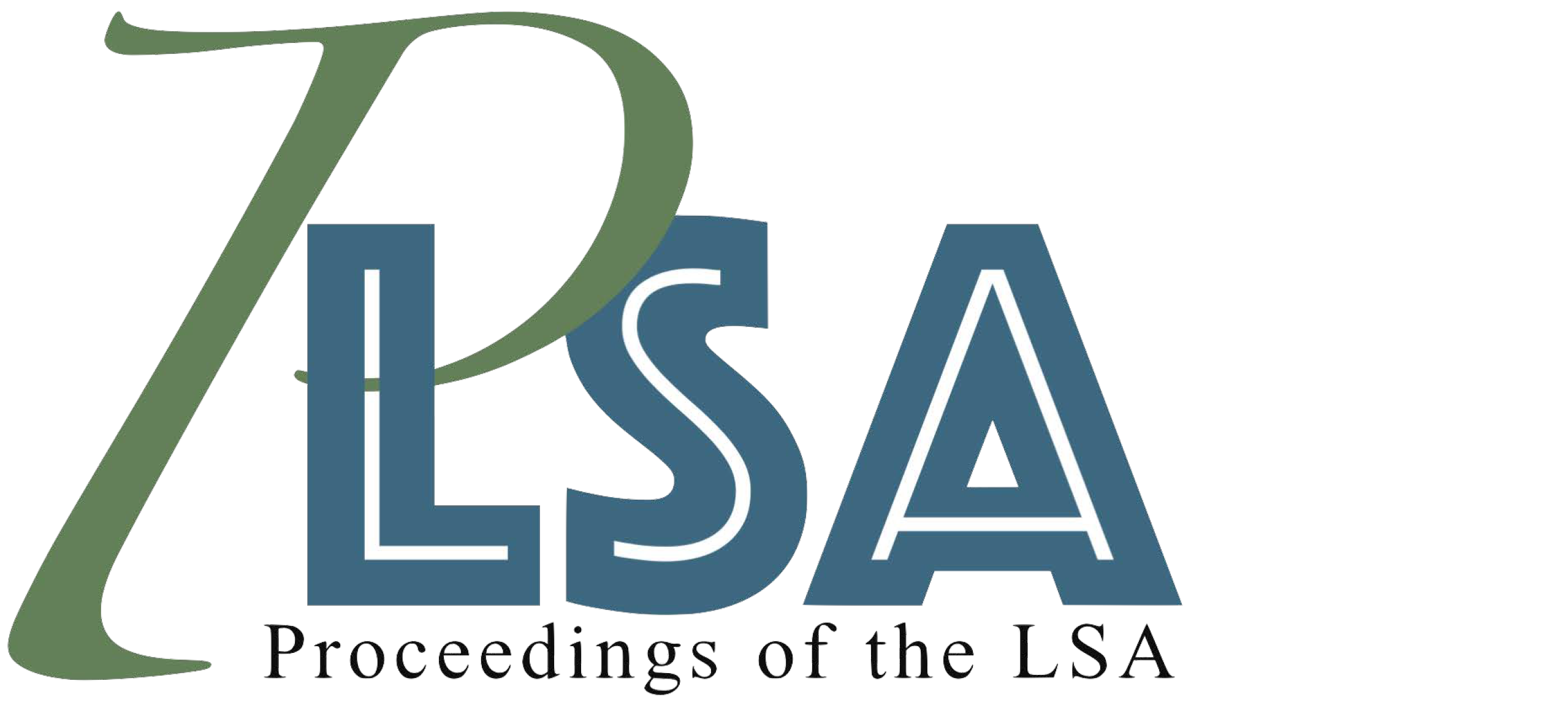Degrees of animacy and telicity in Hindi intransitives: A corpus study
DOI:
https://doi.org/10.3765/plsa.v10i1.5923Keywords:
unaccusativity, unergativity, telicity, agentivity, HindiAbstract
Intransitives are known to fall into two classes, unergatives and unac-cusatives, associated with a wide range of diverging properties. It has long been argued that the semantics of a given verb determines whether it will preferentially exhibit unergative or unaccusative behavior. In particular, agentive semantics has been associated with unergativity, telic semantics with unaccusativity. In this paper, we test this claim empirically using corpus data from Hindi. For a wide range of intransitives, we compute how often they take an animate argument and how often they combine with a telic light verb. The results offer some support for the effect of agentivity and telicity on the syntax of intransitives, but are too limited in scope to allow for reliable conclusions. We end by discussing the methodological challenges
of establishing the semantic correlates of split intransitivity.
Downloads
Published
Issue
Section
License
Copyright (c) 2025 Eva Neu, Rajesh Bhatt, Shaunak Phadnis

This work is licensed under a Creative Commons Attribution 4.0 International License.
Published by the LSA with permission of the author(s) under a CC BY 4.0 license.
